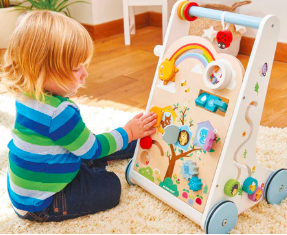Developmentally Appropriate Practice, often referred to as DAP, is a framework used in early childhood education that emphasizes teaching strategies and environments tailored to the age, experience, and individual needs of each child. It is not a one-size-fits-all method, but rather an approach that respects the ways young children grow, learn, and interact with the world around them.
At its core, DAP is about meeting children where they are developmentally and helping them reach new levels of understanding in ways that make sense for their current stage of growth. It encourages learning through play, hands-on exploration, and meaningful relationships, while also providing the right balance of challenge and support.
Key Principles of Developmentally Appropriate Practice
-
Age Appropriateness
Educators consider what is typically expected at a given age and design activities that reflect common patterns of development. For example, preschoolers learn best through active exploration rather than long lectures. -
Individual Appropriateness
Each child is unique. Teachers observe children carefully to adapt lessons based on individual interests, needs, strengths, and learning styles. -
Cultural and Social Context
A child’s background and family experiences are deeply valued. DAP respects and includes cultural traditions, home languages, and social values in learning experiences.
Why DAP Matters in Early Childhood
Children in their early years build the foundation for lifelong learning. By using developmentally appropriate methods, educators can support not only academic skills but also social, emotional, and physical growth. When children feel understood and supported, they are more likely to stay engaged, take risks, and develop a love of learning.
Examples of DAP in Action
-
A toddler classroom with open-ended toys that promote sensory play.
-
A preschool that offers choices between reading a story, playing in a pretend kitchen, or building with blocks.
-
Teachers asking open-ended questions to encourage critical thinking and language development.
Final Thoughts
Developmentally Appropriate Practice is not about limiting what children can achieve—it’s about guiding them in ways that make learning joyful, relevant, and respectful of their individual paths. By focusing on each child’s development, educators build classrooms where children feel safe, confident, and ready to explore.


